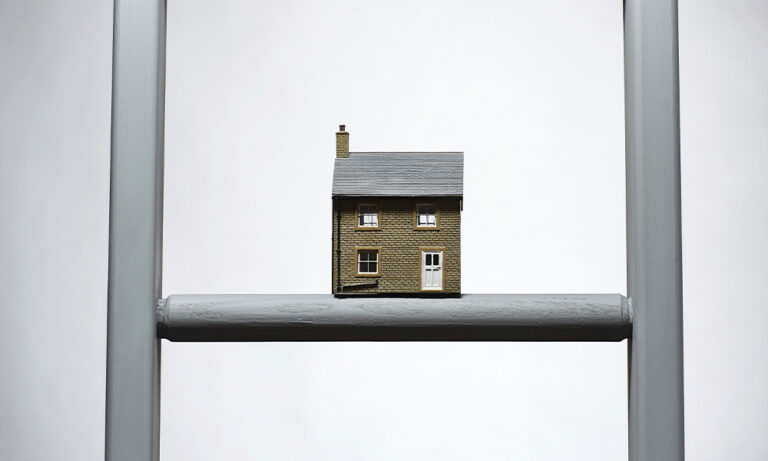While renting out a property can be a great way to generate an income, like any investment, it also comes with risk.
One of the best ways to protect yourself and your investment is through landlord insurance.
However, understanding the various elements of what landlord insurance covers and knowing how much cover you need can be tricky.
In this guide, we tell you everything you need to know about what is landlord insurance and what landlord insurance covers.
What is landlord insurance?
Landlord insurance is a type of property insurance tailored for rental properties.
In that sense, landlord insurance is similar to a standard buildings insurance policy you might have on your own home.
But renting out a property to tenants comes with additional risks, so landlord insurance policies cover you for many other eventualities, too.
Types of landlord insurance
Landlord insurance offers a wide range of protection.
However, the kind of landlord insurance cover you need is largely down to you to decide.
The most common types of landlord insurance include:
1. Buildings insurance
Buildings insurance is the most common type of landlord policy and offers protection if your rental property’s structure is damaged.
It also covers the cost of rebuilding the property if it’s damaged beyond repair.
What it usually covers
Malicious damage caused by theft, vandalism
Damage caused by weather or natural disasters
Subsidence damage
Damage caused by fire or smoke
Flooding damage, caused naturally or through burst pipes
What it often doesn’t cover
General wear and tear
Damage caused by poor maintenance
Damage caused by pets or animals
2. Landlord contents insurance
You won’t require a landlord contents insurance policy to protect your tenant’s belongings, as the responsibility for these items lies with them.
However, if you’re renting out your property on a furnished basis, landlord contents insurance protects your items against damage from fire and flooding, as well as theft.
Landlord insurance can also cover malicious or deliberate damage to your items caused by tenants.
But this isn’t usually a standard part of the contents insurance policy, so make sure you check your policy if this is something you require.
What it usually covers
Theft of items from your rental property that you supply
Damage to furniture caused by fire or water
Damage to electricals and appliances
Damage to clothing, footwear, and linen
What it often doesn’t cover
Damage caused by general wear and tear
The structure of your rental property
Mechanical breakdown when an item reaches the end of its natural life
Any item above the policy limit on value of possessions covered
3. Fixtures and fittings insurance
Fixtures and fittings in your investment property will usually be covered by your main buildings insurance policy.
Fixtures and fittings normally include things like:
Bathroom suites
Carpets and flooring
Internal doors
Integrated appliances
However, if your rental property is a leasehold flat, its fixtures and fittings may not be covered by the freeholder’s buildings insurance policy.
That’s where a fittings and fittings policy may be beneficial.
What it normally covers
Theft of fixtures and fittings
Damage to fixtures and fittings caused by flood or fire
What it sometimes doesn’t cover
Malicious damage to fixtures and fittings
Certain items that the individual insurer may consider to be ‘contents’ rather than fixtures or fittings
4. Accidental damage insurance
Accidental damage insurance covers your costs if you need to repair or replace anything in your rental property damaged by accident.
That might include:
Stains on carpets
Holes in walls
Broken windows
Accidental damage doesn’t cover you for wear and tear, or if your tenants damage your property on purpose.
Policies generally don’t cover damage caused by animals or poor workmanship by tradespeople, either.
5. Liability insurance
Property owners liability insurance covers you if a tenant or visitor to your rental property is injured or their belongings are damaged while they are there.
The cover protects you against things like:
Injuries caused by a trip or fall caused by loose carpet or flooring
Damage to a visitor or tenant’s vehicle caused by a falling roof tile
Liability insurance can help to cover your costs should you be held responsible and someone make a claim against you.
6. Legal expenses insurance
Legal expenses insurance can cover your costs should you need end up in a legal dispute with your tenant.
This element of landlord insurance is sometimes included automatically, so always check your policy.
7. Rent guarantee insurance
Loss of rent insurance can help to protect you from a loss of income if:
Your tenant falls into rent arrears
You’re unable to rent the property out because of damage caused by flooding or fire
Some insurers may not cover both of the eventualities above in one policy, so be sure to check before you commit.
Insurers may also offer accommodation cover, which covers the cost of alternative accommodation for your tenants if they’re no longer able to safely live in your property.
8. Emergency cover
Landlord insurance emergency cover can protect you against burst pipes and other emergencies.
However, policies vary between insurers so always make sure you know exactly what’s included.
Emergency cover normally includes cover for:
- Plumbing or heating emergencies (but not always boiler cover)
- Roofing problems and damage that causes a leak
- Damage to doors or windows that jeopardises the property’s security
- Blocked drains or sewers
- Lost keys
- Pest infestation
- Overnight accommodation costs should the property be unsafe
Is landlord insurance mandatory?
By law, you don’t need to have landlord insurance in order to rent out a property.
However, in most cases, your mortgage provider will insist you take out a suitable buildings insurance policy with a minimum level of cover.
Calculating your landlord insurance cover
Buildings insurance
The element of your landlord insurance that covers the building is calculated based on the projected rebuild cost of the property.
That means in order to establish how much cover you need, you’ll need to know how much it would cost to rebuild the property should it be destroyed.
The rebuild cost of your property includes all labour and materials.
Working this out can be tricky, so hiring a surveyor to calculate this for you is often the best step to take.
Landlord contents insurance
It’s important to remember that the contents element of your landlord insurance policy only covers items you provide and not your tenants’ belongings.
The amount of cover should reflect the total amount it would cost you to replace all the items you want covered.
This is likely to include all furniture and appliances you provide for your tenants.
Property owners’ liability insurance
Most insurers will cover you up to a maximum liability amount – often between £2 million and £5 million.
Property owners’ liability insurance is often provided as standard in landlord insurance policies, but you should always check.
Rent guarantee insurance
Rent guarantee insurance will usually cover you up to a maximum amount per month alongside a standard cover limit for legal expenses.
For example, a policy could cover you for a maximum of £2,500 per month with a legal expenses limit of £50,000.
How much is landlord insurance?
The cost of your landlord insurance policy will depend on the type of property you’re letting out, how much it’s worth and the amount of cover you require.
Insurers will work out how likely you are to make a claim and the potential costs involved, meaning the cost of landlord insurance policies can vary depending on your personal circumstances.
Common landlord insurance terms explained
Insurance perils
‘Perils’ are what insurance companies call the things they cover.
Insurers should provide a perils list that you can study before you decide if certain cover is right for you.
Many will also let you bolt on extra cover if you need it, although this will come at an extra cost, too.
Sum insured
A ‘sum insured’ is the maximum amount of money a particular insurer will pay out in a single claim.
For buildings insurance, it’s important that the sum insured is at least equal to the projected rebuild cost of your property.
Rebuild cost
When an insurer refers to ‘rebuild cost’ they are referring to the total amount it would cost you to rebuild your property should it be destroyed.
That includes labour and materials, so asking a surveyor to work this out is usually the best way to ensure you have enough cover.
Insurance excess
‘Excess’ refers to the amount you must pay towards any landlord insurance claim.
Excess amounts can vary, but generally the higher the excess, the lower the policy premium and vice versa.
Policy exclusions
‘Exclusions’ refer to the things your landlord insurance policy doesn’t cover.
It’s important to look at a provider’s exclusion list before taking out a policy, in case something you require isn’t covered by that provider.
Disclosure
‘Disclosure’ refers to the accurate and complete information you’re required to give an insurer for your policy to be valid.
If you don’t disclose certain information, or provide false information, your policy may become invalid – meaning any claims would not be paid.
Frequently asked questions on landlord insurance
1. Do I need landlord insurance if renting to family?
When renting to family members, you’ll still need to take out an appropriate landlord buildings insurance policy to satisfy your mortgage lender.
Property owners’ liability insurance may also still be needed, to protect yourself against injury or damage claims from visitors to the property.
However, you may feel that rent guarantee insurance isn’t required if you’re renting to family.
2. What landlord insurance do I need for a leasehold flat?
If you’re renting out a leasehold flat, you may not require your own buildings insurance policy.
This is because the freeholder will usually organise this insurance for the whole building, with each property owner contributing towards the cost through a monthly charge.
You should inform your freeholder that you’re renting out your property, however, as they may need to update the buildings policy.
You may also wish to take out other landlord insurance, such as property owners’ liability or rent guarantee insurance.
3. Is landlord insurance tax deductible in the UK?
Landlord insurance is included as an allowable expense on your self-assessment tax return or your corporation tax return if your property is run through a limited company.
4. Do I need both landlord insurance and building insurance?
Building insurance will almost always form the main part of any landlord insurance policy.
As well as building insurance, you can also consider other types of cover as part of your overall landlord insurance policy.
5. Who pays building insurance? Landlord or tenant?
As a property owner, the landlord is responsible for arranging and paying for building insurance.
However, if your rental property is a leasehold flat, the responsibility may fall upon the building’s freeholder.
6. What is trace and access insurance?
Trace and access insurance covers the cost of a professional tracing the source of a leak and establishing if it can be accessed and repaired.
7. Should tenants get insurance?
If your tenants are bringing many of their own belongings with them to your property, it can be worth advising them to take out their own contents insurance policy.
Your own contents insurance won’t cover their items but having a policy of their own will protect their belongings.




